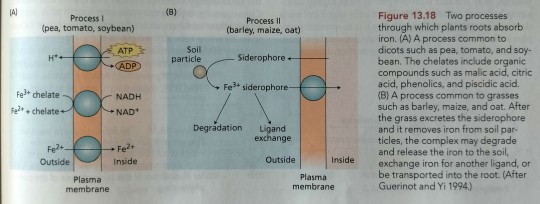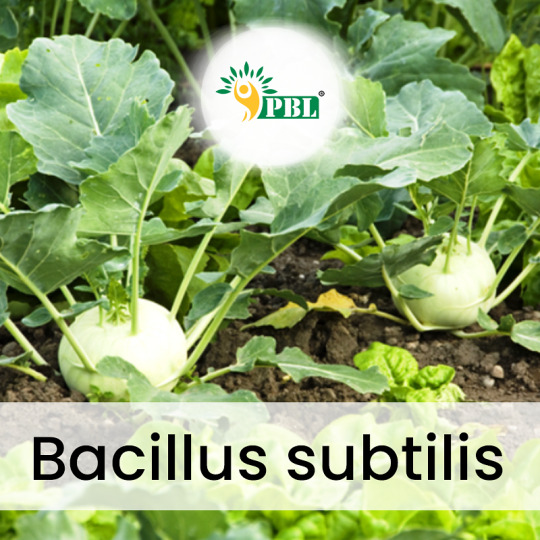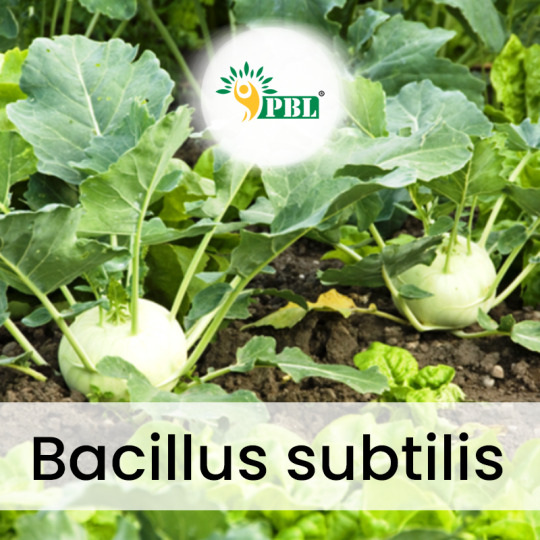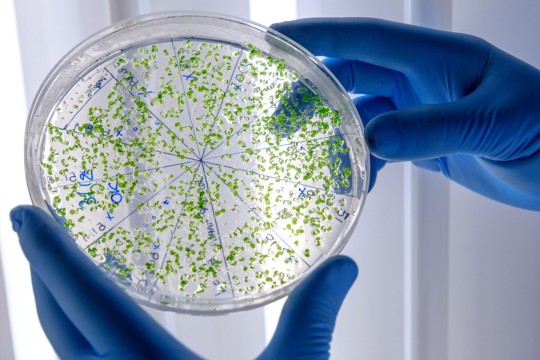#siderophore
Text
Roots use several mechanisms to absorb sufficient amounts of insoluble ferric iron (Fe³+) from the soil solution (Figure 13.18).

"Plant Physiology and Development" int'l 6e - Taiz, L., Zeiger, E., Møller, I.M., Murphy, A.
#book quote#plant physiology and development#nonfiction#textbook#pea#tomato#soybean#barley#maize#oat#iron absorption#chelation#iron chelates#malic acid#citric acid#phenolic#piscidic acid#siderophore#grasses#ferric#ferrous#plant cells
0 notes
Text
hey my man good to see you come on bring it in bring it in- HA HA YOU FOOL! YOU HAVE FALLEN FOR MY RUSE! PAN-RESISTANT ACINETOBACTER ATTACK!!!
#ID consult resident having the worst day of their life rn but im twirling my hair giggling kicking my feet reading about siderophores#teehee i wonder if the state health department calls us back! teehee#*trying to be silly about this but actually scared out of my mind for my patients*#this shit is pan-resistant pan-resistant. fucking amikacin/tobramycin/amp-sulbactam resistant#mom pick me up im scared#medposting
0 notes
Text
Scientists are very serious.
This is a post about science. And soup.
Dr. Elinne Becket, a microbiologist from Cal State University, is in the middle of one of those Fridge Experiments that happens to us all - except in this case, she is uniquely placed to unravel the science down to the microbial level.
While cleaning out her fridge, Dr. Becket found that a tub of family-recipe beef vegetable soup had turned bright blue. “Ok I'm outing myself here,” she tweeted, “but there was forgotten beef soup in our fridge we just cleaned it out and it was BLUE?!?!? Wtf contam would make it blue??? Like BRIGHT blue!! Even w/ all my years in micro I'm not handling this well.“

Read on for a breathless and ongoing saga of Soup and Science, and the wonderful international community that is Academic Twitter.
Academic Twitter quickly reminded her of her Responsibilities to Scientific Inquiry. (Cue the chanting from around the world of “CLONE THE SOUP! CLONE THE SOUP!”)
“I can’t believe y’all talked me into going back into the trash.” she tweeted in response, over a photo of a puddle of beautiful Mediterranean-sea blue soup in the trash bin, with bits of veg and noodles arising from the depths.

Scientists being scientists, Dr. Becket agreed to take a sample and send it to colleagues for cloning and microbial analysis.This involved getting arms-deep into the trash bin of Old Soup. “I’m never forviging @ATinyGreenCell (genomic biologist Sebastian Cocioba) for this.” Dr. Becket tweeted, with a photo of a properly dipped and snipped and VERY blue q-tip in a small clear plastic tub.

Diving into decomposing soup was not the only hazard. She writes: “My mom (who made the soup for my birthday) came across this thread and now 1) I have to answer for letting her soup spoil and 2) she's worried @ATinyGreenCell will figure out her secret recipe.“
Dr. Becket and Sebastian were able to culture the Blue Goo!
Becket posted a photo of three petri plates of streaked beef bouillon agar at 72 hours incubation, at 37C, room temp and 4C. She writes: “Left the plates where they were for another 2 days, except the 37°C one was brought to RT, which then grew white stuff over the yellow stuff and stinks to high heaven. RT looked the same. 4°C had impressive growth. Restreaked them all onto TECH agar, awaiting results!”

Sebastian, from his lab, tweeted a photo of three more covered petri dishes, with early results: “Great progress on isolating the glowy microbe from our #BlueSoup! It's so fluorescent the streak is GREEN. Still needs another restreak as it seems there is a straggler but should clear up in the next plate. Exciting!”
Then yesterday, Sebastian tweeted out an updated photo of his plates under daylight and blacklight. “Whatever grew on the #BlueSoup colony plates overnight glows under UV, but only on King's Agar B! That particular media is used to tease out fluorescein expression in pseudomonads. What are the chances that the same cell line expresses fluorescent AND blue pigments?“

“Looking closer, there definitely is a handful of different microbes showing distinct phenotypes. Could be that the blue producer and the fluorescent microbes are totally different microbes!”
At which point, Professor Cynthia Whitchurch of Norwich, England, responded: “Consistent with P. fluorescens being at least part of the #BlueSoup community. The fluorescence is due to production of the siderophore pyoverdine which is up-regulated when iron availability is limited. P. aeruginosa produced this too but my guess is you have blue Pf.”
And Australian agricultural researcher @WAJWebster helpfully tweeted a petri dish of ALL KINDS of colourful bacterial colonies from white to yellow to orange to stark black, with a cheerful: “You need bact-o--colours? I got you, fam.”

The best part is that as of today, March 9, 2023, THE BLUE SOUP MYSTERY CONTINUES. WE ARE WATCHING SCIENCE HAPPENING!
A paper is being written. And Dr. Becket’s mum is getting an author credit as the proprietary owner of the #BlueSoup recipe.

Dr. Becket’s Twitter is here: https://twitter.com/bielleogy
Sebastian Cocioba’s Twitter is here: https://twitter.com/ATinyGreenCell
Fun IFLS story is here: https://www.iflscience.com/microbiologist-investigates-after-her-beef-soup-turned-blue-in-the-freezer-67894?fbclid=IwAR0H27KqVZhzzrosnjzzKkxuKASZ-0L0Lt6hGwCRDJK8xvFbbSlyS4JvwlM
15K notes
·
View notes
Text
i wont lie i wish there were more posts about the redfield ratio of marine photosynthesis or the dissolved organic phosphorus pool or heterotrophic bacteria’s siderophore ligands 😕
10 notes
·
View notes
Text
Unlocking Bacillus licheniformis Potential
In the search for sustainable ways to grow food, an investigation of microbial options has recently revealed pathways to stimulate plant growth and make the soils better. Along this line, Bacillus licheniformis, which goes down soil, shows to be of primary importance. We explore here, with reference to Novobac, a pioneer in the microbes' use for agriculture, how this microorganism may be useful, specifically demonstrating what benefits it can offer, how it may be used, and its application in modern agriculture.
Bacillus licheniformis: A Bacterial Superhero
It is known as the go-to fertilizer because of its powers in enhancing root growth and boosting soil health. It realizes this goal through the production of plant growth-promoting substances like indole acetic acid (IAA), gibberellins, and cytokinins. Aside from boosting plant growth, this bacteria also fertilises soil, which in turn makes it grow even better and enriches the soil by encouraging the presence of beneficial microbes. The bacillus performs antagonistic activity against the plant pathogenic fungi, including Botrytis cinerea and Glomerella cingulata, thus playing the role of a natural control means of biocontrol, which protects the plants from the different diseases.
The advantages of Bacillus licheniformis in agriculture are as follows:
Biocontrol Capabilities
The Bacillus results in a bundle of metabolites that exhibit antibacterial activity, like antibiotics, enzymes, and volatile substances that hamper the growth of plant pathogens. Therefore, by taking the nutrients and the root zone itself for colonisation, pathogens are left with lower chances of infection, offering an original organic way to prevent plants from developing diseases.
Plant Growth Promotion
The bacteria compete with the plant for the most needed elements, like N and P, and excrete hormones similar to IAA and GA that facilitate rooting. Besides, this trait contributes to the availability of plant nitrogen, which is critically important for the stability of the ecosystem.
Root Stimulation
This bacillus becomes like a natural root provoker, as its compounds help root growth.
Soil Health Enhancement
The bacterium plays a crucial role in decomposing organic matter, thereby improving soil structure and fertility. It produces enzymes that break down cellulose, lignin, and chitin, making nutrients more accessible to plants. Additionally, its siderophores chelate iron and other essential nutrients, enhancing their availability to crops.
Application and Usage
This bacillus demonstrates its multitasking competence in soil cleansing, irrigation, and as the central part of the microbial ecosystem strategy. For the application, one to three pounds per acre is advised, mixed with water so it can be applied as a drench or through the furrow when planted. Drip irrigation is necessary for irrigation because it will ensure that the bacteria are delivered directly to the root zone when a solution of 2-3 grams of water per liter is applied. Moreover, co-cultivating this soil bacterium with other beneficial microbes, such as bacteria and fungi, improves the soil microbial ecosystem.
The Novobac Edge
Novobac, as the provider of microbial solutions, takes the lead in the development of innovative agricultural techniques that are based on microbes. Their product, a high-quality bacteria probiotic powder, is aimed at being used for soil biological improvement and plant growth. The fact that Novobac ensures environmental sustainability in farming is seen in their innovative products, which have replaced chemical fertilizers and pesticides with natural alternatives, in line with the global trend toward organics and eco-friendliness in agriculture.
Conclusion
The bacteria as a whole occupies a strategic place in the endeavor for sustainable agriculture, as it offers a comprehensive method to stimulate plant growth, habitat immunity and the well-being of soil. Organic fertilizers developed by companies like Novobac to have natural biocontrol and plant growth-promoting abilities have a prospective future where agriculture is not only output but also eco-friendly and productive. With further development of the applications of Bacillus licheniformis, we will progressively realize the prospect of an agricultural sector that is more environmentally friendly and impactful.
0 notes
Link
#Plant growth promoting rhizobacteria (PGPR)#Cicer arietinum L.#Black chickpea#Biochemical tests#Bacillus velezensis
1 note
·
View note
Text
Bacterivorous nematodes decipher microbial iron siderophores as prey cue in predator-prey interactions
http://dlvr.it/T17HJK
0 notes
Text
Best Buy Today Bacillus subtilis at Peptech Biosciences Ltd
Bacillus subtilis functions as a biofungicide and a Plant Growth-Promoting Rhizobacteria (PGPR), establishing a presence on plant roots to safeguard the root system. It impedes spore germination in plant pathogens, preventing their attachment to plants and outcompeting other soil microbes. This makes it particularly effective against soil-borne fungal diseases and diseases affecting leaves and fruits. Furthermore, Bacillus subtilis promotes nitrogen fixation, solubilizes soil phosphorus, and produces siderophores with biocontrol properties, thereby fostering plant growth while suppressing pathogen development. It also stimulates the production of secondary metabolites in plants, regulates intracellular phytohormones, and enhances plant stress tolerance, ensuring robust and healthy plant and root growth.

0 notes
Text
Bacillus Subtilis Manufacturers
Description: Bacillus Subtilis Manufacturers
A Potent bio fungicide and Plant Growth Promoting Rhizobacteria (PGPR) .
Safeguards plants by forming a protective shield on roots, hindering spore germination in plant pathogens, and outcompeting soil microbes.

Disease Prevention:
Inhibits pathogen attachment, colonizes roots, and prevents soil-borne and foliar diseases.
Nutrient Enhancement:
Improves nitrogen fixation, solubilizes soil phosphorus, and produces siderophores for robust plant growth.
Secondary Metabolites:
Induces the production of plant secondary metabolites, regulates phytohormones, and enhances stress tolerance.
Competitive Effects:
Outcompetes pathogens through nutritional and spatial locus competition in the rhizosphere.
Antibacterial Materials:
Deploys subtilin, organic acids, and antibacterial proteins to inhibit pathogenic bacteria, enhancing disease resistance.

PEPTECH BIOSCIENCES LTD
+91-11-71239900
909, 9th Floor, Bigjos Tower,
Netaji Subhash Place ,New Delhi -110034
0 notes
Text
The Phosphorus Puzzle: Leveraging Bacteria To Unlock Soil Phosphorus Reserves

Phosphorous is an important and essential nutrient for plant growth and development – responsible for energy transfer, nucleic acid formation, enzyme activation, flowering, and fruit formation. Often, the availability of this critical nutrient is limited in soil, which poses a great challenge to agriculturists. In its infinite wisdom, nature has an inherent solution to this common challenge, in the form of phosphorous-solubilizing microorganisms (PSM).
Phosphorous contributes nearly 0.2% of a plant's dry weight. In its importance towards healthy crop growth, it is second to nitrogen among essential mineral nutrients. Usually, the phosphorous concentration in soil falls within the range of 500-800 mg/kg. However, only 0.1% of this phosphorous content is in a form that is readily available to plants. This is because phosphorous abundantly exists in an insoluble form in nature, making it inaccessible to crop plants and hindering the plant’s growth and development.
Bacteria to Unlock Soil Phosphorus Reserves
In a natural environment, a variety of microorganisms in the soil – particularly the rhizosphere – are able to mineralize and solubilize soil phosphorus, so that it is available to crop plants. This class of such microbes is known as Phosphorus Solubilizing Microorganisms (PSM). PSMs were first recognized back in 1903. The most powerful phosphorous solubilizer strains are bacteria like Pseudomonas, Bacillus, Rhizobium, and Enterobacter, alongside some fungal strains like Penicillium and Aspergillus.
Mechanism of Action
Bacterial species like Pseudomonas and Rhizobium can naturally “mineralize” organic phosphorous and “solubilize” inorganic phosphorus – two of the ways they make soluble phosphorous available in the soil. This phosphorous solubilization takes place through one of various mechanisms including acidification, chelation, and the action of phosphatase enzymes.
In the process of acidification, phosphorous-solubilizing bacteria (PSB) utilize organic acids like gluconic & citric acid, the acidic properties of which dissolve insoluble phosphorus compounds, producing soluble phosphates that plants can absorb. Some PSBs produce chelating compounds such as siderophores, organic acids, and amino acids that form complexes with insoluble phosphorous, making them soluble for uptake by plants. PSB also releases some enzymes like phosphatases, which directly break down organic phosphorous compounds to make them available to plants.
Phosphorous-solubilizing bacteria provide a promising solution to the complex phosphorous puzzle that unfolds in a variety of soils. We can harness their tremendous potential in the form of biofertilizers, which work as soil additives that enhance the availability of phosphorous to plants. This consequently helps manage plant nutrition, promote sustainable farming practices, and reduce the environmental impact of agriculture. As we continue to discover and explore these microbial allies, we move one step closer to ensuring a sustainable future for agriculture and the food system overall.
References
Mengel, K., Kirkby, E.A., Kosegarten, H., Appel, T. (2001). Phosphorus. In: Mengel, K., Kirkby, E.A., Kosegarten, H., Appel, T. (eds) Principles of Plant Nutrition. Springer, Dordrecht. https://doi.org/10.1007/978-94-010-1009-2_9
Alori, E. T., Glick, B. R., & Babalola, O. O. (2017). Microbial Phosphorus Solubilization and Its Potential for Use in Sustainable Agriculture. Frontiers in Microbiology, 8, 258916. https://doi.org/10.3389/fmicb.2017.00971
Khan, A.A., Jilani, G., Akhtar, M.S., Naqvi, S.M.S. and Rasheed, M., 2009. Phosphorus solubilizing bacteria: occurrence, mechanisms and their role in crop production. J agric biol sci, 1(1), pp.48-58.
0 notes
Text
Two distinct non-ribosomal peptide synthetase-independent siderophore synthetase gene clusters identified in Armillaria and other species in the Physalacriaceae
Pubmed: http://dlvr.it/SxXLwp
0 notes
Text
Neutrophil gelatinase-associated Lipocalin
It is a protein that is primarily expressed in neutrophils, a type of white blood cell, as well as other cells such as kidney tubular cells.
Neutrophil gelatinase-associated lipocalin (NGAL) is a protein that is primarily expressed in neutrophils, a type of white blood cell, as well as other cells such as kidney tubular cells. NGAL is involved in various physiological and pathological processes, particularly in the context of inflammation, infection, and kidney injury. NGAL is a member of the lipocalin protein family, which are small extracellular proteins that bind and transport small hydrophobic molecules. It can bind to a variety of ligands, including iron-containing siderophores, bacterial lipopolysaccharides, and certain matrix metalloproteinases (MMPs). This binding activity contributes to the role of NGAL in modulating the immune response and tissue remodelling.

0 notes
Text

Bacillus Subtilis Biofungicide
Bacillus subtilis biofungicide is a powerhouse solution in plant protection and growth enhancement. Functioning as both a biofungicide and a Plant Growth Promoting Rhizobacteria (PGPR), it fortifies roots by deterring spore germination in plant pathogens and inhibiting their attachment. This exceptional biopesticide excels against soil-borne fungal diseases, as well as leaf and fruit infections. Bacillus Subtilis fungicide thrives in its role, fostering nutrient fixation, soil phosphorus solubilization, and siderophore production. By promoting secondary metabolites, phytohormone regulation, and stress resilience, it nurtures robust plant health, instigates vigorous growth, and primes roots for optimal vitality.
#bacillus subtilis#bacillus subtilis biofungicide#bacillus subtilis biopesticide#bacillus subtilis fungicide#bacillus subtilis manufacturers
0 notes
Text
Boost Crop Productivity with Zinc Solubilizing Biofertilizers
Agricultural productivity plays a crucial role in meeting the global demand for food. To achieve sustainable and efficient farming, it is essential to address nutrient deficiencies in crops. Zinc is one such micronutrient that is vital for plant growth and development. However, zinc deficiency is widespread in many agricultural regions worldwide, leading to reduced crop yields and quality. Fortunately, advancements in agricultural science have introduced a promising solution: zinc solubilizing biofertilizers. In this blog post, we will explore how these biofertilizers can significantly enhance crop productivity while promoting environmentally friendly farming practices.
Understanding the Role of Zinc in Crop Growth: Zinc is an essential micronutrient required for various physiological and biochemical processes in plants. It is involved in enzyme activation, DNA synthesis, protein synthesis, and hormone regulation. Adequate zinc levels in plants ensure healthy growth, improved seed quality, enhanced nutrient uptake, and increased tolerance to stresses such as drought and disease. However, zinc deficiency in soils can limit crop productivity and negatively impact human nutrition.

Challenges of Zinc Deficiency: Zinc deficiency is prevalent in both developed and developing countries, affecting major staple crops such as rice, wheat, maize, and legumes. Traditional methods of addressing zinc deficiency, such as soil amendment with chemical fertilizers, have limitations. Chemical fertilizers are often costly, have low efficiency, and pose environmental risks when overused. Therefore, a sustainable and eco-friendly approach is needed to tackle zinc deficiency in agriculture.
Enter Zinc Solubilizing Biofertilizers: Zinc solubilizing biofertilizers offer an innovative solution to overcome zinc deficiency in crops. These biofertilizers consist of beneficial microorganisms, primarily bacteria and fungi, that possess the ability to convert insoluble zinc compounds into soluble forms, thus making it available for plant uptake. The microorganisms produce organic acids, enzymes, and siderophores that solubilize zinc from the soil and increase its bioavailability.
Advantages of Zinc Solubilizing Biofertilizers:
Enhanced Nutrient Availability: The biofertilizers increase the solubility of zinc in the soil, making it more accessible to plant roots. This improved availability ensures optimal zinc uptake, leading to healthier and more productive crops.
Increased Crop Yield: Adequate zinc levels in plants result in better growth, improved photosynthesis, and increased nutrient utilization efficiency. This translates into higher crop yields and improved quality, contributing to food security and economic benefits for farmers.
Environmentally Friendly: Zinc solubilizing biofertilizers promote sustainable agricultural practices by reducing the dependence on chemical fertilizers. They enhance nutrient use efficiency, minimize nutrient leaching, and contribute to soil health and long-term sustainability.
Biofertilizers for Organic Farming: Zinc solubilizing biofertilizers are suitable for organic farming systems as they are derived from natural sources and do not contain synthetic chemicals. They align with the principles of organic agriculture while providing an effective solution for zinc deficiency.
Compatibility with Existing Practices: These biofertilizers can be easily integrated into existing agricultural practices. They can be applied as seed treatments, soil amendments, or foliar sprays, depending on the specific crop and soil conditions.
Conclusion:
Zinc solubilizing biofertilizers have emerged as a promising solution to address zinc deficiency in crops and boost agricultural productivity. By harnessing the power of beneficial microorganisms, these biofertilizers enhance zinc availability, promote sustainable farming practices, and contribute to improved crop yields and quality. As we strive for a more sustainable and food-secure future, the integration of zinc solubilizing biofertilizers in agricultural systems holds great potential to meet the growing global demand for nutritious crops.
0 notes
Text
Harnessing the Power of KMB Potash Mobilizing Bacteria for Enhanced Crop Nutrition

Potassium (K) is an essential macronutrient for plant growth and development. It plays a vital role in various physiological processes, including enzyme activation, osmoregulation, and protein synthesis. Adequate potassium availability in the soil is crucial for optimizing crop yield and quality. However, a significant portion of soil potassium remains unavailable to plants due to its fixation and immobilization. To overcome this challenge, scientists have turned to the power of KMB potash mobilizing bacteria, which offer a promising solution for enhanced crop nutrition.
KMB potash mobilizing bacteria are naturally occurring microorganisms that have the ability to release potassium from unavailable forms in the soil, making it accessible to plants. These beneficial bacteria possess specific enzymatic pathways and mechanisms that help them solubilize and mobilize potassium from insoluble mineral forms, such as potassium feldspar and mica.
The process of potash mobilization involves the production of organic acids, siderophores, and other chelating compounds by KMB bacteria. These substances act as chemical agents that facilitate the release of potassium ions from the mineral lattice, making it available for plant uptake. Additionally, KMB bacteria can also enhance the cation exchange capacity of the soil, further improving potassium availability.
By harnessing the power of KMB potash mobilizing bacteria, farmers and growers can unlock the potential of soil potassium and promote optimal crop nutrition. This has numerous benefits for crop production:
Increased Nutrient Uptake Efficiency: The ability of KMB bacteria to solubilize potassium in the soil enhances its availability for plant roots. As a result, plants can efficiently absorb and utilize this essential nutrient, leading to improved nutrient uptake efficiency and enhanced crop growth.
Enhanced Crop Yield and Quality: Adequate potassium levels are crucial for achieving optimal crop yield and quality. By mobilizing previously inaccessible potassium reserves in the soil, KMB bacteria can significantly contribute to increased crop productivity and improved crop characteristics, such as size, color, and nutritional value.
Stress Tolerance and Disease Resistance: Potassium plays a vital role in plant stress tolerance and disease resistance mechanisms. By ensuring an ample supply of available potassium, KMB bacteria help plants withstand various environmental stresses, such as drought, salinity, and temperature extremes. Additionally, potassium is known to enhance the structural integrity of plant cells, making them less susceptible to certain diseases and pests.
Sustainable Agriculture: The use of KMB potash mobilizing bacteria aligns with the principles of sustainable agriculture. By optimizing potassium availability through natural and biological means, farmers can reduce their reliance on synthetic fertilizers, which can have negative environmental impacts. This approach promotes soil health, reduces nutrient runoff, and minimizes the risk of groundwater contamination.
Cost-Effectiveness: Incorporating KMB potash mobilizing bacteria into agricultural practices can have long-term cost benefits. By improving nutrient use efficiency and reducing the need for potassium fertilizers, farmers can achieve significant cost savings while maintaining or even increasing crop yields.
In conclusion, harnessing the power of KMB potash mobilizing bacteria offers a promising approach for enhancing crop nutrition and improving agricultural sustainability. By solubilizing and mobilizing potassium in the soil, these beneficial bacteria provide plants with increased access to this essential nutrient, leading to improved growth, stress tolerance, and overall crop productivity. As we continue to explore and understand the potential of KMB bacteria, their incorporation into farming systems holds great promise for a more efficient and environmentally friendly approach to crop nutrition.
0 notes
Text
"Phosphorus on Demand: How Phosphorus Solubilizing Bacteria Can Benefit Crop Production"
Phosphorus is an essential nutrient for plant growth and development, and it plays a vital role in numerous physiological and metabolic processes in plants. Despite the fact that phosphorus is abundant in soil, most of it is not available to plants because it exists in insoluble forms that plants cannot absorb. As a result, farmers and gardeners frequently supplement their soil with chemical fertilizers to provide the necessary phosphorus for plant growth.
However, chemical fertilizers are costly, and they can also have negative environmental effects. The overuse of fertilizers can lead to soil and water pollution, which can harm human health and wildlife. Furthermore, chemical fertilizers have a short-term effect on plant growth, and they can be harmful to soil microbial communities, reducing soil fertility in the long run. In this context, the use of phosphorus solubilizing bacteria (PSB) has gained considerable interest in recent years as an alternative and eco-friendly approach to improve phosphorus availability in soils.

PSBs are a diverse group of bacteria that have the ability to solubilize insoluble forms of phosphorus in soil, making it available to plants. These bacteria are ubiquitous in soil, and they have a symbiotic relationship with plants, where they promote plant growth and health by solubilizing phosphorus and producing plant growth-promoting substances. PSBs have been found to enhance the nutrient uptake of plants, increase crop yields, and reduce the need for chemical fertilizers.
One of the key benefits of using PSBs in agriculture is their ability to increase the availability of phosphorus in soils. The solubilization of phosphorus by PSBs is mediated by various mechanisms, including the production of organic acids, enzymes, and siderophores. These compounds react with insoluble phosphorus, releasing it into the soil solution, where it can be taken up by plants. The use of PSBs can thus improve soil fertility and nutrient cycling, leading to increased plant productivity and yield.
Moreover, PSBs can also improve the overall health of plants by producing plant growth-promoting substances such as indole acetic acid (IAA), gibberellins, and cytokinins. These substances stimulate plant growth, increase root development, and enhance plant stress tolerance, making plants more resilient to environmental stresses such as drought, salinity, and disease.
Another significant advantage of PSBs is their eco-friendliness. Unlike chemical fertilizers, PSBs do not contribute to soil and water pollution, and they do not harm soil microbial communities. In addition, PSBs are easy to apply and can be integrated into existing agricultural practices without the need for significant changes. Farmers can simply add PSB inoculants to their soil, and the bacteria will colonize the rhizosphere, where they will solubilize phosphorus and promote plant growth.
In conclusion, the use of PSBs in agriculture has significant potential to improve crop production and reduce the environmental impact of chemical fertilizers. PSBs can solubilize insoluble forms of phosphorus in soil, promote plant growth and health, increase crop yields, and reduce the need for chemical fertilizers. PSBs are also eco-friendly and can be easily integrated into existing agricultural practices. As such, the use of PSBs represents a promising approach to sustainable agriculture and soil management, which can benefit both farmers and the environment.
0 notes